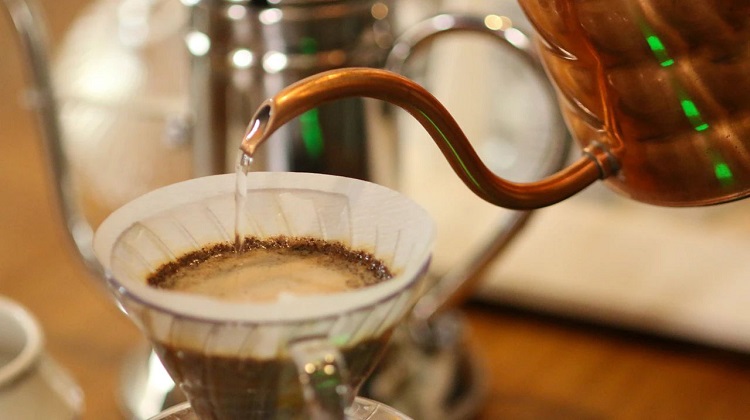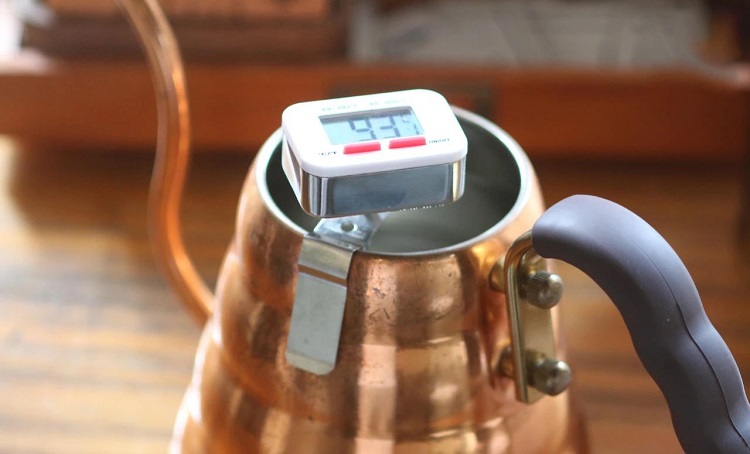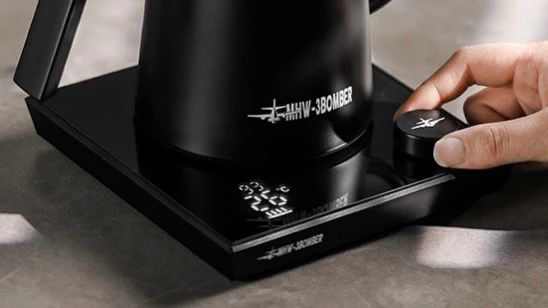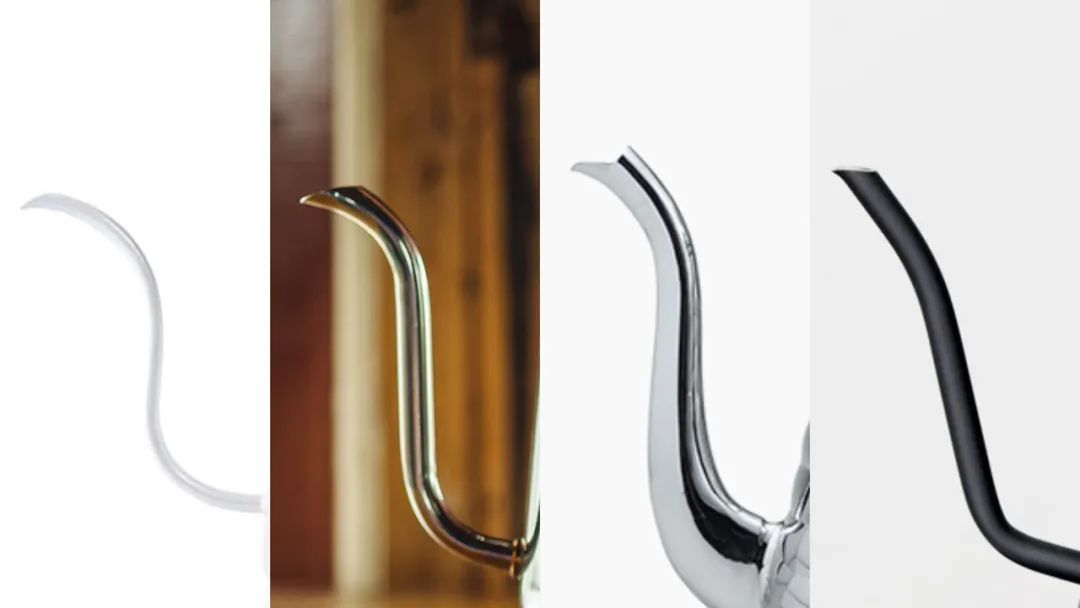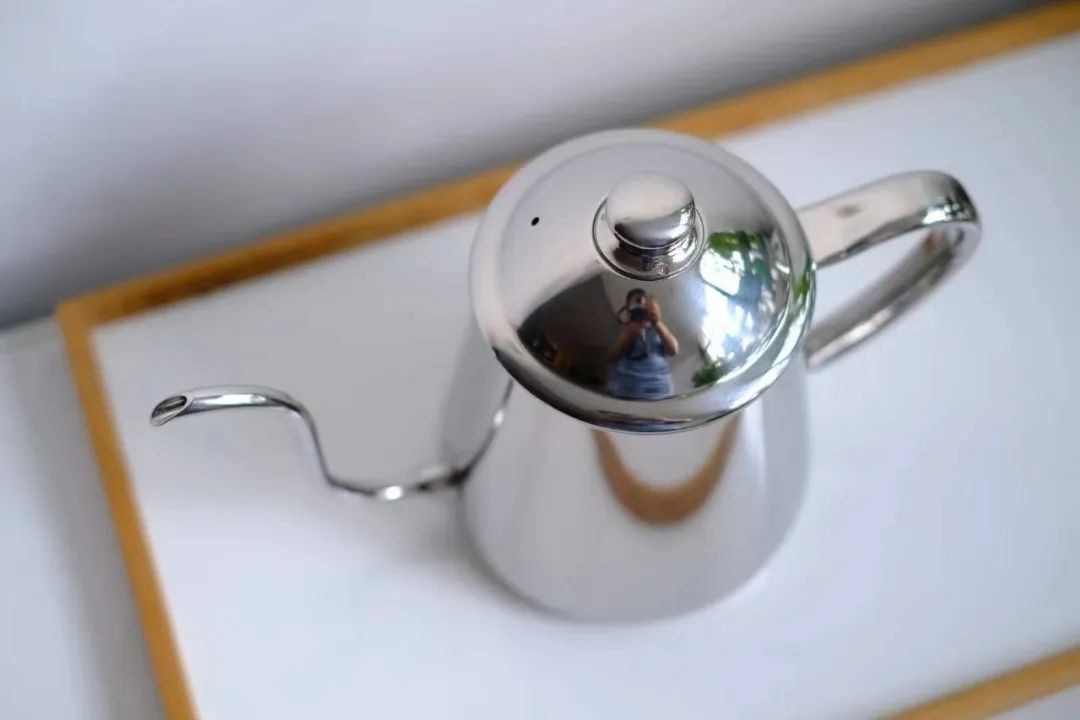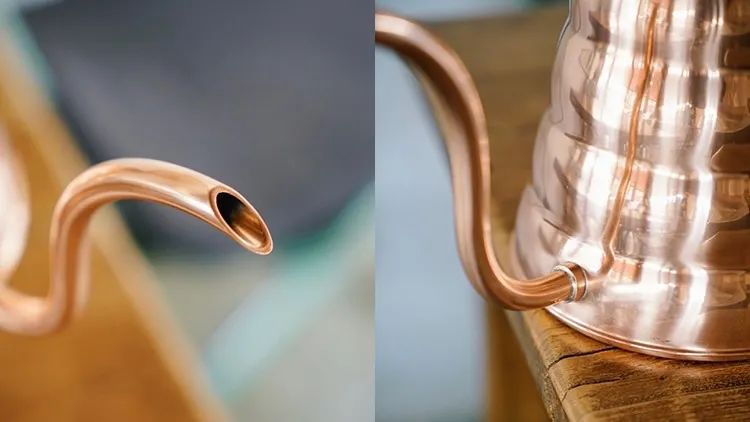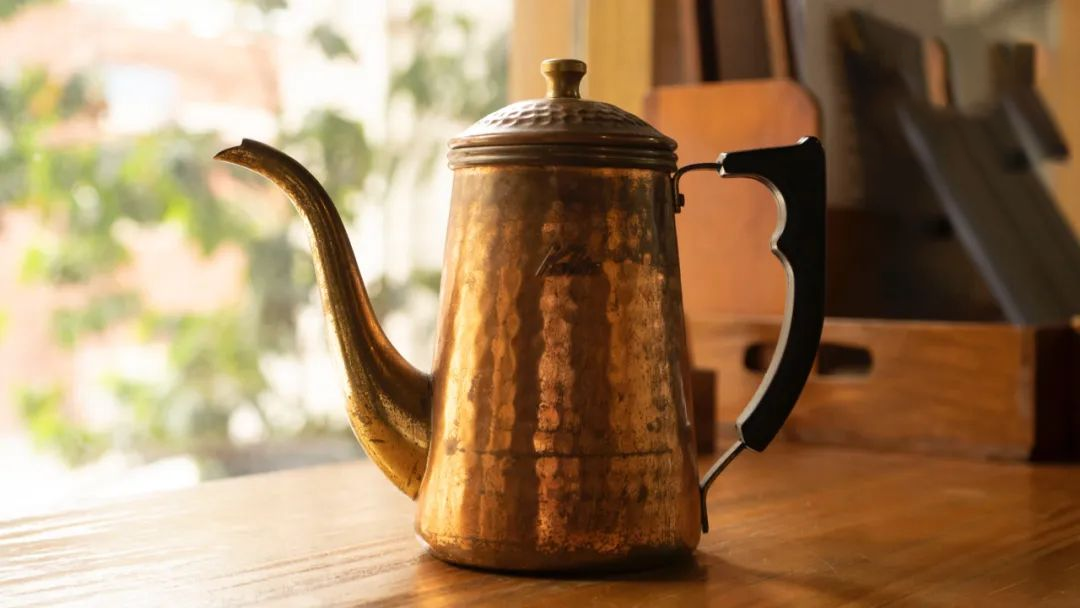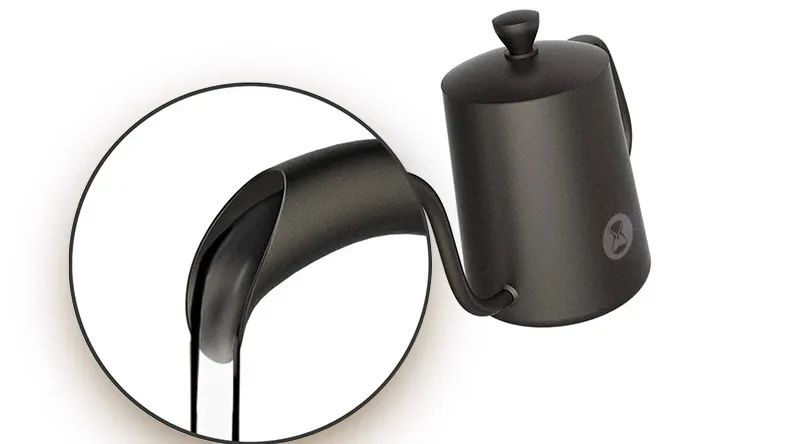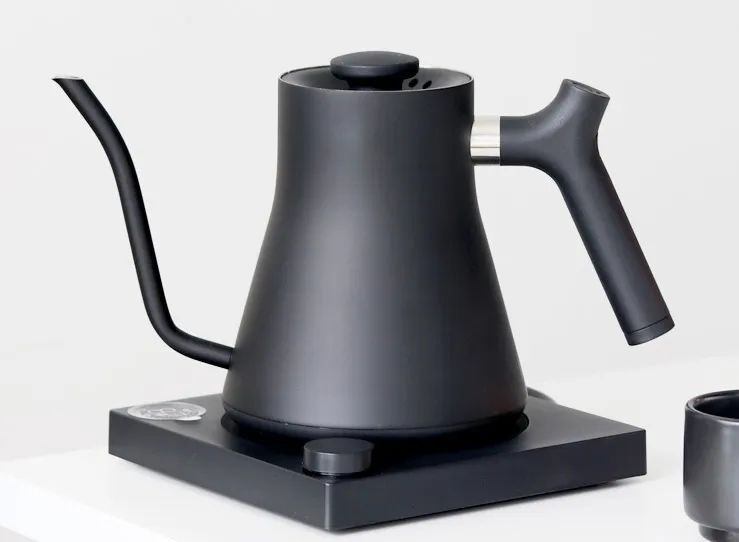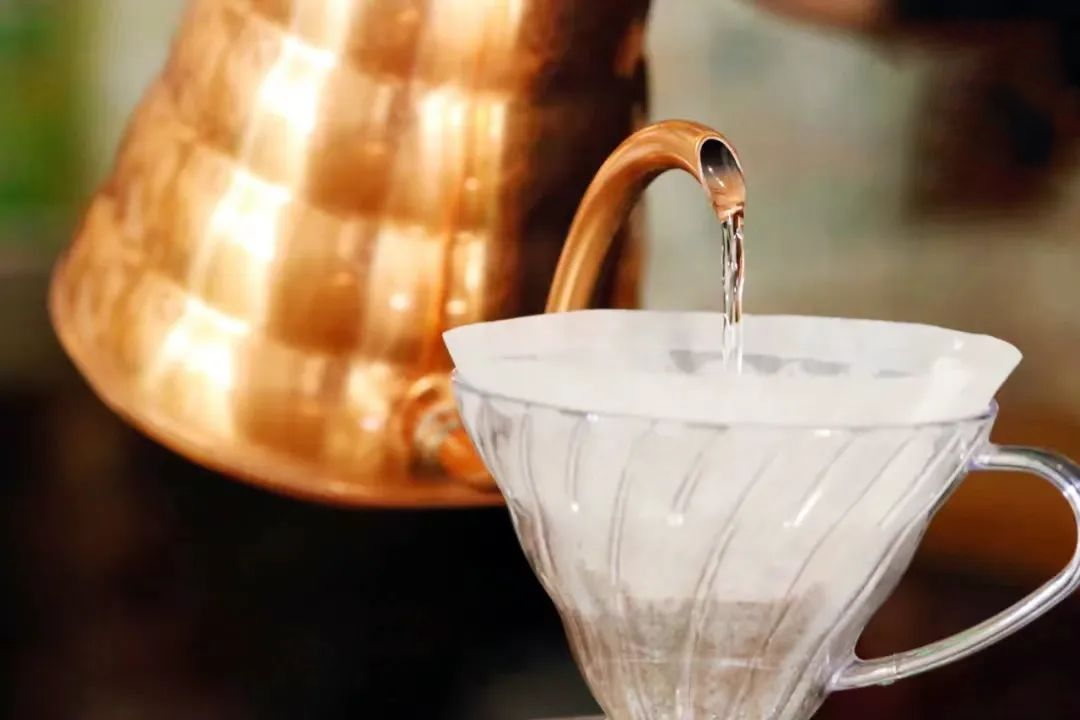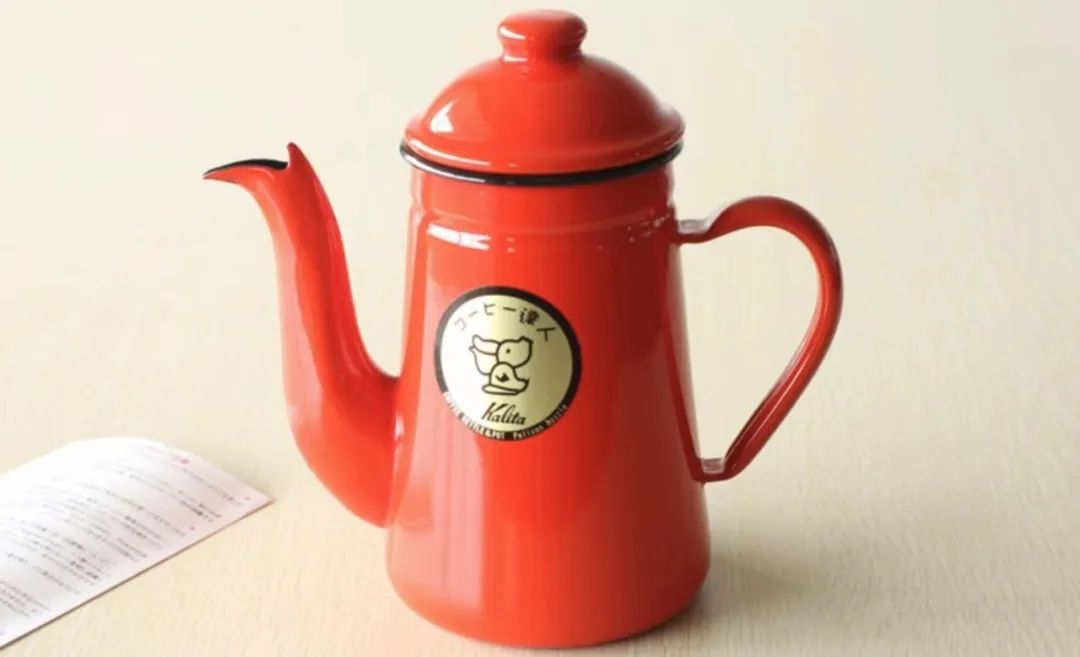As an important tool for brewing coffee, hand brewed pots are like swordsmen’s swords, and choosing a pot is like choosing a sword. A handy coffee pot can appropriately reduce the difficulty of controlling water during brewing. So, choosing a suitable hand brewed coffee pot is very important, especially for beginners, it can be easier to brew the desired coffee. So today, let’s share how to pick a contestant to make a coffee pot.
Temperature control and non-temperature control
The first step for a contestant to make a pot is to choose between temperature control or non-temperature control. The non temperature-controlled version of the hand flushing kettle, which is a conventional kettle without a temperature control module, is relatively affordable in terms of price and is the basic version of many appliance manufacturers. It is suitable for friends with additional water boiling equipment, but they need to purchase another thermometer to use together.
The advantage of the temperature controlled version of the hand flushing kettle is relatively prominent – “convenient”: it comes with a heating function and can adjust the target water temperature at will. And insulation function, which can keep the water temperature at the current temperature during the brewing interval. But there are also drawbacks: due to the addition of a temperature control module at the bottom, it will be heavier than the non temperature controlled version, with a focus on the bottom of the pot.
Simply put, if you don’t usually brew too much, or if you want to purchase a more affordable brewing pot, choose a non-temperature controlled version; If the purpose is for convenience and the number of flushes is usually high, then a temperature-controlled kettle is definitely a good choice.
Coffee pot spout
The spout is an important part that dominates the shape of the water column. The common spouts on the market are thin necked goose necks, wide necked goose necks, or eagle beaks, crane beaks, and flat beaks. The differences in these spouts can directly lead to changes in the size and impact of the water column, while also having a significant impact on the difficulty of getting started and the operating space.
Friends who are just starting to experience hand washing can start with a fine mouthed kettle. The water column flushed out of a fine mouthed kettle may appear relatively thin, but it has a strong impact and is easy to use, making the water flow easier to control. But there are also certain drawbacks: the inability to use high water flow reduces certain playability.
The difficulty of controlling water in a wide mouthed pot is greatly increased compared to a narrow mouthed pot, and it requires a lot of practice to control the flow of water. But it has more playability, and once proficient, it can control the size of the water flow at will, play with various cooking methods, and even meet the tricky cooking techniques like the ‘drip method’.
The spout of a coffee pot is specially designed with a wide mouth, which looks like the head of a crane from the side, hence its name. Don’t be afraid that the water flow cannot be controlled because it is designed with a wide mouth. The designer has installed a porous water baffle at its outlet to prevent excessive water flow, and it can achieve free water control without too much proficiency! Because of this design, it has been loved by many people, ensuring playability and making water control less difficult.
Eagle beaked kettle refers to a spout with a downward flow design that outlines the spout. The advantage of this design is that it can make the rushing water more easily form a vertical water column.
Secondly, there are flat spouted portable coffee pots, whose openings tend to be parallel to the horizontal plane. Without the diversion design of the spout, the water flowing out is more likely to form a parabolic curve, which requires more practice to be used freely.
Kettle body
The pot body can be measured based on the size of the cup being brewed. The conventional capacity is mostly between 0.5 and 1.2L. What you need to choose is an additional water volume of about 200ml compared to the amount you need to brew, leaving ample tolerance space. This is because when there is not enough water, a vertical and impactful water column cannot be formed, ultimately resulting in insufficient mixing of coffee powder, resulting in insufficient extraction.
material
The most common materials for hand washing kettles on the market are stainless steel, copper, and enamel porcelain. In terms of cost-effectiveness, the first choice is stainless steel, which is also the most commonly used material on the market, with good quality and low price.
When it comes to performance, it’s copper pots, which have excellent insulation and quality, but the price will be slightly higher (compared to non temperature controlled versions).
From the perspective of appearance, one can consider enamel porcelain, which is full of artistic colors throughout the body, but the disadvantage is that it is fragile.
Overall, a handy hand made pot is still necessary for beginners. Do not purchase a difficult to use hand made pot just because of its high appearance.
Post time: Sep-19-2023






